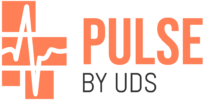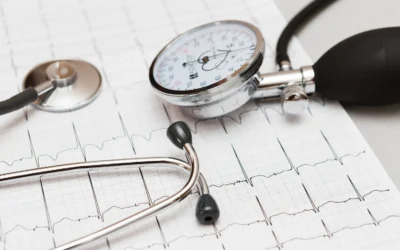Cholesterol management is a critical component of maintaining cardiovascular health, as imbalanced cholesterol levels can significantly increase the risk of heart disease, stroke, and other vascular complications. The challenge lies in distinguishing between “good” and “bad” cholesterol while adopting lifestyle habits that effectively regulate their levels. As cardiovascular disease remains a leading cause of death globally, understanding cholesterol’s role in the body and implementing evidence-based management strategies is vital.
Recent advancements in medical research have expanded our knowledge of cholesterol metabolism, paving the way for more personalized approaches to treatment. While dietary adjustments and physical activity remain the cornerstone of cholesterol control, newer pharmacological interventions provide additional options for those at higher risk. This guide explores a comprehensive approach to cholesterol management, combining lifestyle modifications with medical insights to help individuals achieve healthier cholesterol levels and reduce cardiovascular risk.
In This Article
Understanding Cholesterol: Types and Their Impact on Health
Cholesterol is a fatty substance present in every cell of the body. It plays a vital role in hormone production, cell membrane integrity, and vitamin D synthesis. However, excessive cholesterol in the bloodstream can lead to plaque formation in arteries, increasing the likelihood of heart attacks and strokes.
There are two main types of cholesterol:
- Low-Density Lipoprotein (LDL) Cholesterol: Often referred to as “bad” cholesterol, LDL carries cholesterol to the arteries. When present in high amounts, it contributes to plaque buildup, narrowing blood vessels and elevating cardiovascular risk.
- High-Density Lipoprotein (HDL) Cholesterol: Known as “good” cholesterol, HDL transports excess cholesterol from the bloodstream back to the liver, where it is broken down and excreted. Higher levels of HDL are associated with a lower risk of heart disease.
In addition to these two, triglycerides—a type of fat found in the blood—also play a role in cardiovascular health. Elevated triglyceride levels, often linked to obesity and metabolic disorders, further increase the risk of arterial blockages.
To maintain a healthy lipid profile, individuals should strive for balanced LDL, HDL, and triglyceride levels. The following table summarizes optimal cholesterol levels recommended by health organizations:
| Cholesterol Type | Optimal Level (mg/dL) | Borderline High (mg/dL) | High (mg/dL) |
|---|---|---|---|
| LDL (Bad) | <100 | 130-159 | ≥160 |
| HDL (Good) | ≥60 | 40-59 | <40 |
| Triglycerides | <150 | 150-199 | ≥200 |
| Total Cholesterol | <200 | 200-239 | ≥240 |
Regular cholesterol screenings help monitor these levels, guiding individuals toward necessary lifestyle changes or medical interventions.
Dietary Changes for Cholesterol Management
Dietary habits play a crucial role in regulating cholesterol levels, as certain foods can either improve or exacerbate lipid imbalances. Implementing a heart-healthy diet requires reducing harmful fats, increasing fiber intake, and incorporating cholesterol-lowering nutrients.
Reducing Saturated and Trans Fats
Saturated fats, found in red meat, full-fat dairy products, and processed foods, contribute to elevated LDL cholesterol. Replacing these with healthier options, such as lean poultry, fish, and plant-based proteins, can significantly improve cholesterol levels. Similarly, trans fats, commonly present in fried foods, margarine, and commercial baked goods, should be eliminated as they not only raise LDL but also lower HDL cholesterol.
Increasing Fiber-Rich Foods
Soluble fiber binds with cholesterol in the digestive tract, preventing its absorption into the bloodstream. Foods such as oats, barley, beans, lentils, and flaxseeds are excellent sources of fiber that support cholesterol reduction. Incorporating at least 25-30 grams of fiber daily can lead to noticeable improvements in lipid profiles.
Incorporating Healthy Fats
Not all fats are harmful—monounsaturated and polyunsaturated fats, found in olive oil, avocados, nuts, and fatty fish, can help increase HDL while lowering LDL levels. Omega-3 fatty acids, abundant in salmon, mackerel, and walnuts, also provide anti-inflammatory benefits that protect cardiovascular health.
Adding Plant Sterols and Stanols
Naturally occurring plant compounds, sterols and stanols, reduce cholesterol absorption in the intestines. These compounds are found in fortified foods such as certain margarine brands, orange juice, and yogurt. Studies suggest that consuming 2 grams of plant sterols per day can lower LDL cholesterol by 5-15%.
By consistently following a balanced diet rich in heart-healthy nutrients, individuals can achieve significant cholesterol reductions without the need for medication.
Lifestyle Modifications for Cholesterol Control
Beyond diet, lifestyle choices heavily influence cholesterol metabolism. Incorporating physical activity, maintaining a healthy weight, and managing stress can further enhance cholesterol regulation.
Engaging in Regular Physical Activity
Exercise stimulates enzymes that help clear LDL from the bloodstream while increasing HDL cholesterol. The American Heart Association recommends at least 150 minutes of moderate aerobic activity per week, such as brisk walking, swimming, or cycling. Resistance training, such as weightlifting, also contributes to improved lipid profiles by promoting muscle growth and metabolic efficiency.
Maintaining a Healthy Weight
Excess body weight is closely linked to higher LDL and triglyceride levels. Losing even a small percentage of body weight—5-10%—can significantly improve cholesterol balance and overall cardiovascular health. A combination of calorie control, physical activity, and portion moderation supports sustainable weight management.
Managing Stress and Sleep
Chronic stress and poor sleep patterns can negatively affect cholesterol levels by triggering inflammatory responses and hormonal imbalances. Engaging in stress-reducing activities such as meditation, deep breathing, and yoga, alongside ensuring 7-9 hours of quality sleep, contributes to better cholesterol regulation.
Avoiding Smoking and Limiting Alcohol
Smoking lowers HDL cholesterol while promoting arterial damage and inflammation. Quitting smoking leads to rapid improvements in cholesterol levels and overall heart health. Additionally, while moderate alcohol consumption (such as red wine) has been associated with increased HDL, excessive drinking elevates triglycerides and should be avoided.
Pharmacological Interventions
For individuals with persistently high cholesterol or those at elevated cardiovascular risk, medications may be necessary to achieve optimal lipid levels.
Statins: First-Line Treatment
Statins, such as atorvastatin and simvastatin, work by blocking cholesterol production in the liver. They are highly effective in lowering LDL cholesterol, often reducing levels by 30-50%. While generally well-tolerated, some individuals may experience muscle pain or liver enzyme elevations, necessitating close medical monitoring.
Non-Statin Medications
For those who cannot tolerate statins or require additional cholesterol-lowering effects, alternatives include:
- Ezetimibe: Reduces cholesterol absorption in the intestines.
- PCSK9 Inhibitors: Injectable drugs that enhance LDL receptor activity, leading to significant LDL reductions.
- Bempedoic Acid: A newer oral medication that lowers LDL cholesterol through liver enzyme inhibition.
Emerging Therapies
Recent research has introduced RNA-based cholesterol-lowering drugs, which target specific genetic pathways to control lipid metabolism. These cutting-edge treatments hold promise for individuals with genetic lipid disorders.
Conclusion
Effective cholesterol management requires a multifaceted approach, combining dietary modifications, lifestyle adjustments, and, when necessary, medical interventions. By adopting heart-healthy habits such as reducing saturated fats, increasing fiber intake, exercising regularly, and managing stress, individuals can achieve significant improvements in their cholesterol profiles. For those at higher risk, pharmacological treatments offer additional tools to lower LDL and protect cardiovascular health. With continued research and advancements in treatment options, maintaining optimal cholesterol levels is increasingly achievable, ultimately reducing the global burden of heart disease.
References
- American Heart Association. (2024). Cholesterol management guidelines. Retrieved from https://www.heart.org
- Centers for Disease Control and Prevention. (2024). Cholesterol facts. Retrieved from https://www.cdc.gov
- Food and Drug Administration. (2023). Health claims: Soy protein and cholesterol reduction. Retrieved from https://www.fda.gov
- Harvard T.H. Chan School of Public Health. (2024). Dietary guidelines for heart health. Retrieved from https://www.hsph.harvard.edu
- Mayo Clinic. (2024). Cholesterol-lowering treatments. Retrieved from https://www.mayoclinic.org
- National Heart, Lung, and Blood Institute. (2023). Managing cholesterol: Prevention and treatment. Retrieved from https://www.nhlbi.nih.gov










0 Comments